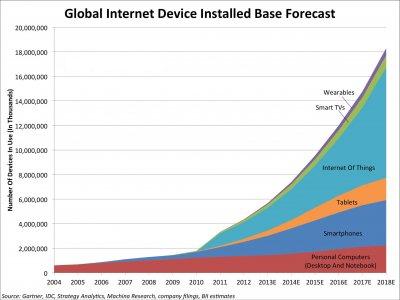Sensors Everywhere and Data Science Changes the World


Smart organizations are using the power of data science and data produced by embedded sensors and machine devices to better measure performance, discover patterns, prevent problems, and improve operations and processes.
Sensors and devices (Internet of Things) are starting to be embedded in many physical and biological things to collect data allowing organizations to better measure and improve performance. With sensors everywhere - from our smart-phones, body-fitness devices and cars to home climate systems, appliances, roads and medical equipment - opportunities to collect data are endless.
Combined with data science techniques - including predictive and prescriptive analytics, machine learning and algorithms - organizations can make better decisions on the operational level, innovate new products and services on the tactical level, and make game changing shifts on the strategic level. This is already positively impacting many businesses, healthcare, city planning, public transportation, crime prevention and power utilization.
You cannot manage and improve what you cannot measure and embedded sensors produce real-time intelligence allowing optimal equipment utilization and supply chain operations. The goal is to collect more data to measure things. It is advantageous to take a process or activity that was previously invisible and turn it into data that can be measured, tracked and monitored to optimize processes, make better decisions and innovate.
Considering this new massive volume and variety of data, organizations need to develop a
technology, information management and data science strategy to collect, store, analyze and distribute data from multiple sources. This means humans working with and leveraging machine learning and algorithms to efficiently analyze data and take appropriate, timely action.
Utilizing professional data scientists and forming data science teams to combine, slice and dice this data to create valuable, actionable insights from both small and large data sets - is the key to achieving durable competitive advantage.
